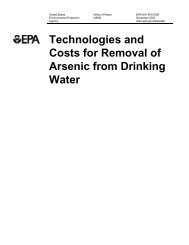Hitchhiker's Guide to the Dilution Refrigerator - Harvard University ...
Hitchhiker's Guide to the Dilution Refrigerator - Harvard University ...
Hitchhiker's Guide to the Dilution Refrigerator - Harvard University ...
Create successful ePaper yourself
Turn your PDF publications into a flip-book with our unique Google optimized e-Paper software.
LHe TRANSFER TO MAIN BATH (Not complete instructions; just a few reminders pertinent <strong>to</strong><br />
<strong>the</strong> initial transfer)<br />
1) Check that <strong>the</strong> outlet end of <strong>the</strong> LHe transfer tube has <strong>the</strong> correct nozzle. For <strong>the</strong> initial<br />
transfer, you should use a tip that opens straight down, as it is best <strong>to</strong> spray LHe <strong>to</strong> <strong>the</strong> bot<strong>to</strong>m of<br />
<strong>the</strong> empty main bath during <strong>the</strong> first transfer. For later transfers use <strong>the</strong> nozzle with side<br />
openings, since it's better <strong>to</strong> spray incoming LHe <strong>to</strong> <strong>the</strong> sides of <strong>the</strong> partially full bath <strong>to</strong> avoid<br />
excess splashing.<br />
2) Put <strong>the</strong> level meter sampling rate <strong>to</strong> high.<br />
3) Transfer philosophies vary, but during <strong>the</strong> initial transfer it is important <strong>to</strong> cool <strong>the</strong> insert as<br />
adiabatically as possible <strong>to</strong> avoid excess LHe blowoff. Use a very slow rate of flow; begin <strong>the</strong><br />
transfer without pressurizing <strong>the</strong> dewar, and allow dewar pressure <strong>to</strong> govern <strong>the</strong> transfer until <strong>the</strong><br />
dewars equilibrate. Then pressurize <strong>the</strong> LHe dewar at a VERY low pressure, ~1-2 psi. Cooling<br />
<strong>the</strong> magnet from 200 ohms (77K) <strong>to</strong> 300 ohms should take roughly one hour, but cooling <strong>the</strong><br />
remainder of <strong>the</strong> way <strong>to</strong> ~1084 ohms (4.2K) takes roughly fifteen minutes.<br />
4) Usually no more than 11 inches (~50L) of LHe are required <strong>to</strong> cool and fill <strong>the</strong> fridge dewar<br />
from 77K.<br />
5) Once <strong>the</strong> transfer is complete, turn <strong>the</strong> level meter sampling rate back <strong>to</strong> low <strong>to</strong> reduce boil-off<br />
from <strong>the</strong> main bath.<br />
6) Compare resis<strong>to</strong>r readings with typical 4K values. Check sample connections.<br />
7) You can begin this step when you begin <strong>the</strong> initial Lhe transfer. Connect a turbo pump or leak<br />
detec<strong>to</strong>r <strong>to</strong> <strong>the</strong> valved tee in<strong>to</strong> <strong>the</strong> condenser line and pumping line. Use <strong>the</strong> pump <strong>to</strong> evacuate<br />
<strong>the</strong> condenser line and pumping line through <strong>the</strong> two valves on <strong>the</strong> tee as well as 1 and 3. Don’t<br />
forget <strong>to</strong> open <strong>the</strong> stupid fat valve (old Stanford fridge only) in <strong>the</strong> pumping line where it runs past<br />
<strong>the</strong> dumps. Pump for 30 minutes <strong>to</strong> an hour so that P1 is as low as possible. The condenser line<br />
valve and pumping line valve should remain closed until <strong>the</strong> lines are cleared, as o<strong>the</strong>rwise air<br />
can flow in<strong>to</strong> <strong>the</strong> dilution unit, freeze, and cause an obnoxious block.<br />
8) Once <strong>the</strong> pumping line and condenser line have been evacuated, open <strong>the</strong> pumping line valve<br />
and <strong>the</strong> condenser line valve <strong>to</strong> pump on <strong>the</strong> dilution unit for 30 minutes <strong>to</strong> an hour.<br />
9) Close <strong>the</strong> pumping line valve and condenser line valve and also 1,3, and <strong>the</strong> valves on <strong>the</strong> tee.<br />
You can leave <strong>the</strong> stupid fat valve (old Stanford fridge only) open for <strong>the</strong> rest of <strong>the</strong> run.<br />
Disconnect <strong>the</strong> pump.<br />
10) S<strong>to</strong>p flowing He gas through <strong>the</strong> pot line by closing first <strong>the</strong> needle valve, <strong>the</strong>n <strong>the</strong> pot line<br />
valve, <strong>the</strong>n <strong>the</strong> tee valve. Open 4a <strong>to</strong> pump <strong>the</strong> pot line down <strong>to</strong> ~10-2mbar. Open <strong>the</strong> pot valve<br />
<strong>to</strong> pump <strong>the</strong> pot down <strong>to</strong> ~10-1mbar. Close <strong>the</strong> pot valve and 4a.<br />
PREPARING TO CONDENSE<br />
1) The <strong>the</strong>rmal contact between <strong>the</strong> dilution unit and main bath must be broken or <strong>the</strong> dilution unit<br />
will not cool below 4.2K.<br />
2) Connect a turbo <strong>to</strong> <strong>the</strong> IVC line valve. Pump out <strong>the</strong> lines <strong>to</strong> ~10-4 mbar, <strong>the</strong>n open <strong>the</strong> IVC<br />
valve <strong>to</strong> pump out exchange gas for 3-4 hours or overnight so that <strong>the</strong> pump pressure decreases<br />
<strong>to</strong> 10-5 mbar. Close IVC valve.<br />
3) Insert <strong>the</strong> LHe cold trap.<br />
4) Insert and fill <strong>the</strong> LN2 cold trap. During operation, fill it once a day or so, and take care that <strong>the</strong><br />
level never falls far below ~50%<br />
5) Start with all cabinet valves closed.<br />
6) Open 1.<br />
7) Open 13a and let gas from behind <strong>the</strong> pump cool in <strong>the</strong> LN2 trap for ~ 1 minute.<br />
8) Open <strong>the</strong> pumping line valve but keep <strong>the</strong> condenser line valve closed for now.<br />
CONDENSING THE MIXTURE<br />
1) Check that 1a and 5a are closed.<br />
2) Prepare <strong>to</strong> pump on <strong>the</strong> pot. Open 4a <strong>to</strong> pump <strong>the</strong> pot line down <strong>to</strong> ~10-2mbar. Open <strong>the</strong> pot<br />
valve <strong>to</strong> pump <strong>the</strong> pot down <strong>to</strong> ~10-1mbar.<br />
3) Begin <strong>to</strong> cool <strong>the</strong> pot. Open <strong>the</strong> needle valve slightly, and set <strong>the</strong> throughput <strong>to</strong><br />
allow <strong>the</strong> pot <strong>to</strong> cool. The pot resis<strong>to</strong>r should approach 1.62 kOhm with P2 ~ 10 - 20 mbar. The<br />
6

















